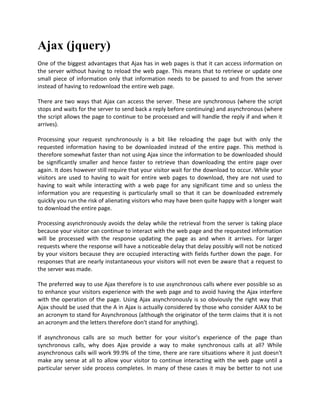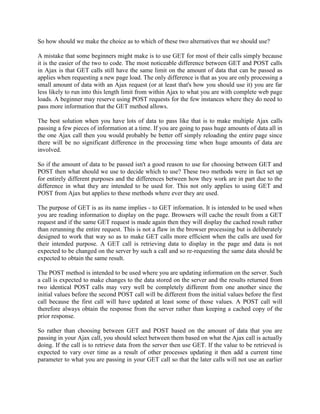The document discusses the use of AJAX in web pages, highlighting its ability to access server information without reloading the entire page. It explains the differences between synchronous and asynchronous AJAX calls, advocating for asynchronous calls to enhance user experience, except in rare cases where synchronous calls may be necessary. Additionally, it outlines the appropriate use of GET and POST methods in AJAX, emphasizing that GET is for retrieving data and POST is for updating data on the server.



